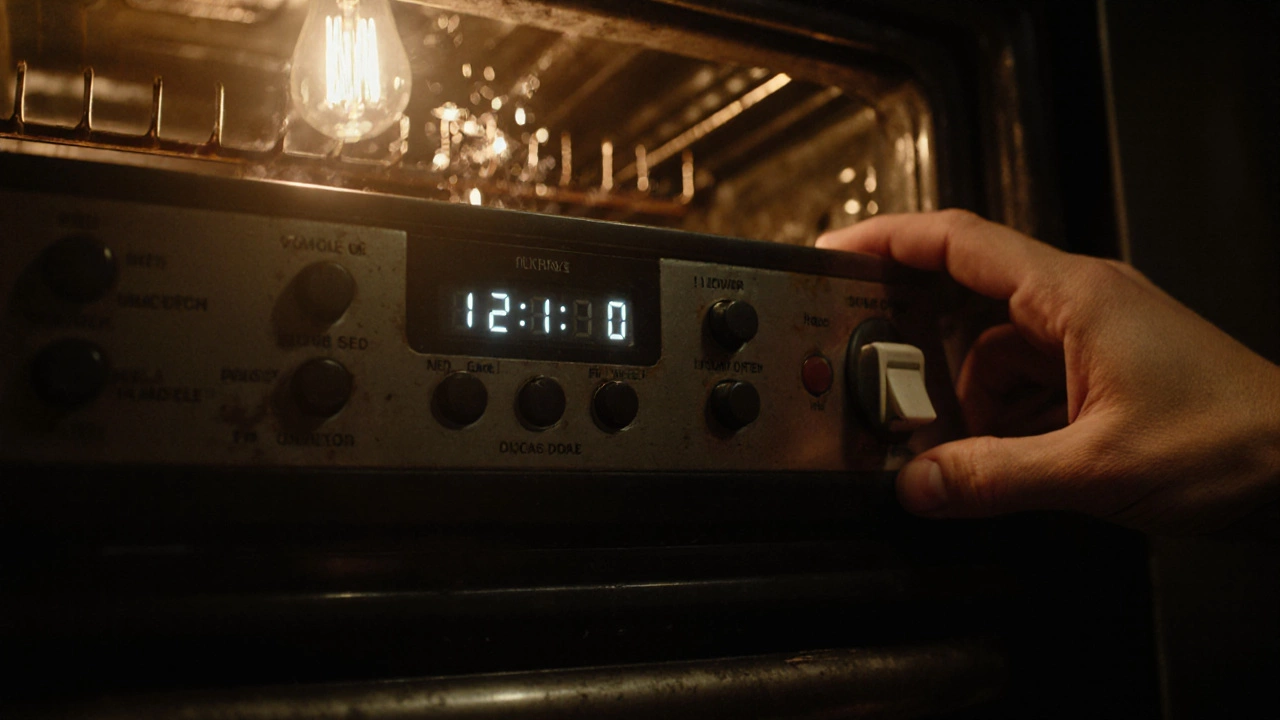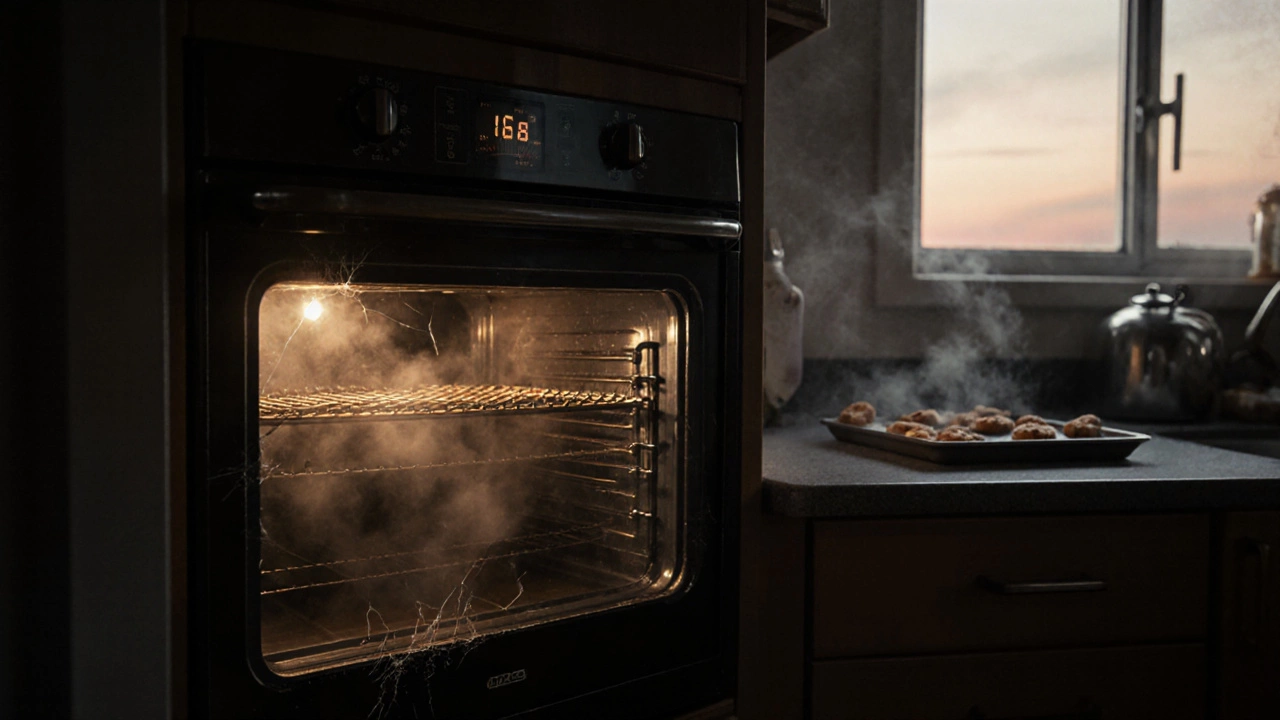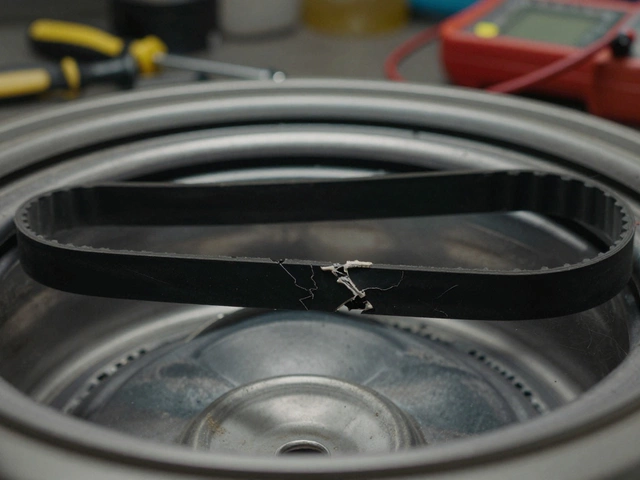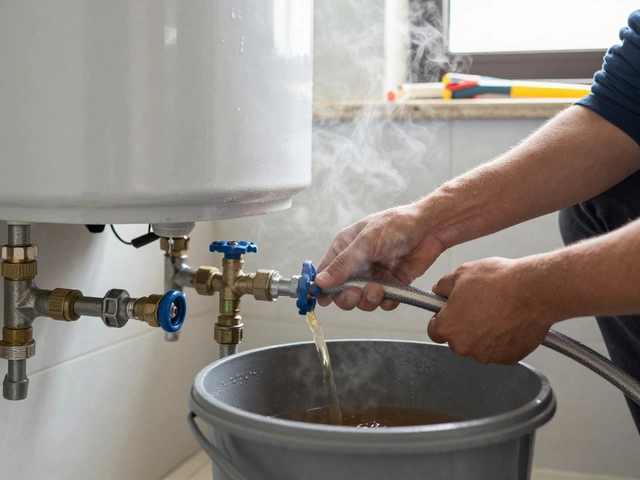Oven Replacement Calculator
Is Your Oven Due for Replacement?
This tool helps you determine if your oven needs to be replaced based on age, repair history, and safety concerns.
It’s 7 p.m. on a Wednesday. You’ve got guests coming in an hour, and you turn on the oven. Nothing happens. No hum. No heat. Just silence. You check the breaker. You reset it. Still nothing. You’ve had this oven for nine years. Is it time to replace it-or can you just fix it again?
Most people keep their ovens way longer than they should. Not because they’re cheap, but because they don’t know the signs that it’s done. A broken oven isn’t always loud or obvious. Sometimes it just… stops being reliable. And that’s when you start losing time, money, and sanity.
Your oven’s real lifespan isn’t what the manual says
Manufacturers claim electric ovens last 10 to 15 years. That’s true-if you treat it like a luxury appliance, not a workhorse. In real homes, especially in places like Wellington where humidity and salt air creep in, most ovens start struggling after 8 to 10 years. The heating elements wear out. The thermostat drifts. The door seal cracks. These aren’t failures. They’re symptoms of aging.
Think of it like a car. You don’t replace it the second the radio breaks. But if the engine’s misfiring, the brakes are spongy, and you’re spending more on repairs than the car’s worth, it’s time to think about a new one.
Sign #1: It takes forever to preheat-or never gets hot enough
If your oven takes 30 minutes to hit 180°C when it used to take 12, something’s wrong. That’s not a slow start. That’s a failing heating element or a thermostat that’s lost its calibration.
Test it: Put an oven thermometer on the middle rack. Set the dial to 180°C. Wait 20 minutes. If the thermometer reads below 160°C, your oven isn’t heating properly. This isn’t just annoying-it’s dangerous. Undercooked food, uneven baking, ruined meals. And no, turning up the temperature won’t fix it. The control system is too far gone.
Replacing a heating element costs $120-$200. But if the thermostat is also faulty, you’re looking at $300+ in repairs. At that point, you’re paying for a 10-year-old appliance to work like a new one. That’s not a repair. That’s a band-aid.
Sign #2: The oven won’t hold temperature
Ever bake cookies and find they’re burnt on the bottom but raw in the middle? Or roast chicken that’s dry on the outside and cold inside? That’s not your recipe. That’s your oven cycling on and off too wildly.
A healthy oven maintains temperature within ±5°C. An old one swings ±20°C or more. You hear it clicking on and off every 2-3 minutes. That’s the thermostat trying to catch up. It’s working harder than it should. That puts stress on the whole system.
One homeowner in Lower Hutt replaced her oven after her roast beef came out medium-rare when she set it for well-done. She’d been adjusting the temperature for years. She didn’t realize the oven was lying to her.
Sign #3: The door doesn’t seal
Check the door seal. Run your hand along the edge when it’s closed. If you feel heat leaking out-or worse, cold air sneaking in-your gasket is cracked or compressed. That’s not just energy waste. That’s heat escaping where it should be contained.
A broken seal makes your oven work 20-30% harder. Your electricity bill climbs. Your oven overheats trying to compensate. And if you’re using a gas oven, you could be risking carbon monoxide buildup from incomplete combustion.
Replacing the gasket costs $40. But if the door itself is warped from years of heat stress, the seal won’t stay put. You’ll be replacing it again in six months.

Sign #4: You’re seeing sparks, smoke, or strange smells
Sparks inside the oven? That’s not normal. It’s usually a cracked heating element or wiring touching metal. Smoke? That’s insulation burning or grease buildup igniting. A burning plastic smell? Could be damaged wiring or a failing control board.
These aren’t repairable issues. They’re safety hazards. One electrician in Christchurch told me about a house fire started by a 12-year-old oven that had a frayed wire behind the control panel. The homeowner had ignored the occasional spark for two years.
If you’ve seen smoke or sparks-even once-get it inspected. If the repair quote is over $250, walk away. The risk isn’t worth it.
Sign #5: The control panel is glitchy or dead
Buttons that don’t respond. Display flickering. Settings resetting on their own. These aren’t just annoyances. They mean the control board is failing. That’s the brain of your oven.
Replacing a control board costs $200-$400. But here’s the catch: those boards are often discontinued for ovens older than 8 years. Even if you find one, it might not be compatible with newer safety standards. You’re buying a part that’s already obsolete.
And if your oven has a digital clock that’s been flashing 12:00 since 2019? That’s not a coincidence. It’s a sign the electronics are failing.
Sign #6: You’re spending more on repairs than the oven’s worth
This is the most practical test. How much have you spent fixing it over the last two years? $150? $300? $500?
Compare that to the price of a new basic electric oven. You can buy a reliable 60cm model with convection, self-cleaning, and a good warranty for $800-$1,200. That’s less than what most people spend on repairs over five years.
Here’s the math: If you’ve spent more than 50% of the cost of a new oven on repairs, it’s time to replace it. That’s the rule of thumb professionals use. And it’s not about being wasteful-it’s about avoiding future headaches.

What about energy efficiency?
Old ovens are energy hogs. A 15-year-old model uses 30-40% more electricity than a new one. In New Zealand, where electricity prices are climbing, that adds up. Over five years, you could save $400-$700 just by switching to a modern oven with better insulation and smarter heating cycles.
Look for models with the Energy Star label. Even without it, newer ovens have better thermal retention. That means shorter preheat times and less energy waste.
When to replace vs. when to repair
Here’s a simple decision tree:
- If your oven is under 8 years old and has one broken part (like a heating element), repair it.
- If it’s 8-10 years old and needs two or more repairs in a year, replace it.
- If it’s over 10 years old and has any safety issue (sparks, smoke, bad seal), replace it immediately.
- If repair costs exceed $300 and the oven is over 8 years old, replace it.
There’s no shame in replacing an oven. Appliances aren’t meant to last forever. They’re designed to be replaced. Holding onto an old one out of habit or guilt just costs you more in the long run.
What to look for in a new oven
Don’t just buy the cheapest one. Look for:
- Convection fan (for even baking)
- Self-cleaning function (saves hours of scrubbing)
- Thermal insulation that keeps heat in
- Warranty of at least 2 years
- Energy efficiency rating (A+ or higher)
Brands like Smeg, Bosch, and LG have solid track records in New Zealand. But even budget brands like Fisher & Paykel and Westinghouse offer reliable models now.
Don’t wait for disaster
Most people replace their ovens after something breaks badly-like a fire, a ruined holiday meal, or a surprise power bill. But you don’t have to wait for that. If your oven is showing multiple signs of age, it’s not broken. It’s just done.
Replacing it isn’t an expense. It’s an investment in time, safety, and better meals. Your future self will thank you when you’re roasting a turkey without checking the thermometer three times.
How long should an electric oven last?
Most electric ovens last 8 to 12 years with normal use. In humid or coastal areas like Wellington, they often wear out faster due to corrosion and moisture. After 10 years, repairs become less cost-effective and safety risks increase.
Is it worth repairing an oven that’s 12 years old?
Generally, no. Repairs for ovens over 10 years old often cost more than 50% of a new unit’s price. Parts are harder to find, and the risk of another failure soon after is high. Replacing it saves money and avoids future stress.
Can a faulty oven cause high electricity bills?
Yes. A poorly sealed door, failing thermostat, or worn heating elements force the oven to work longer and harder. Older models can use 30-40% more power than new ones. That adds $50-$100 a year to your bill.
What’s the cheapest way to replace an oven?
Look for end-of-line models at appliance retailers, or check second-hand stores like Salvation Army or local Facebook Marketplace. Many people upgrade and sell perfectly functional ovens. Just make sure the door seals well and the heating elements work before buying.
Should I replace my oven before selling my house?
If your oven is over 8 years old and looks worn, yes. Buyers notice outdated or broken appliances. A modern oven adds perceived value and can help close a sale faster. You don’t need a luxury model-just a clean, functional one with no visible damage.









